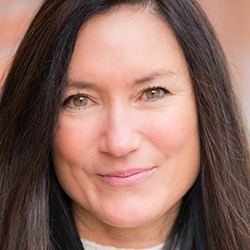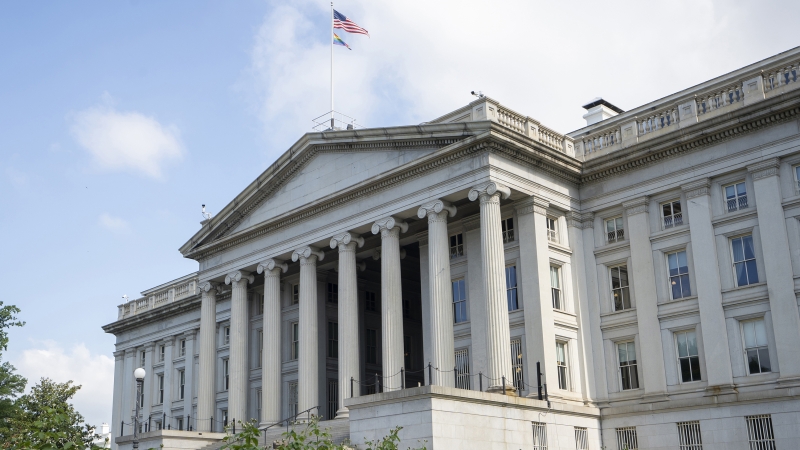“The bill establishes new requirements for the processing of residential leasehold mortgages, business leasehold mortgages, land mortgages, and right-of-way documents,” Adams says. “It outlines required response times for the completion of certified title status reports, notification of delays in processing, the necessary form of notices and delivery of certain reports. Honestly, in any organization, you can’t manage what you don’t measure. So having deadlines, timeframes, and metrics for how you manage that process is necessary in order for it to work efficiently.”
The Act will also open up access to the Trust Asset and Accounting Management System (TAMS) to both lenders and tribal members. TAMS is the platform used by both the BIA and LTROs to track title records.
“They should be able to go in and look at the status of where things are,” Adams says. “I think this provides reassurance that there’s some accountability and that things aren’t going to go into a black hole.”
This year’s legislation was introduced with bipartisan support by South Dakota Senators John Thune and Mike Rounds, as well as Sen. Tina Smith of Minnesota and Sen. Jon Tester of Montana. The Mortgage Banker Association (MBA) also issued its stamp of approval.
The Land
The U.S. is home to about 550 federally recognized tribes. Many are in Alaska, where a regulation prohibited the federal government from taking land in the trust up until December 2014.
Only about 15% of 1st Tribal loans fund properties on tribal trust lands. The majority are fee simple, which denotes the maximum ownership in land that can be legally granted.
“In order to be an approved lender in the (Sec. 184) program, you can’t just do work on fee simple properties,” Robinson says. “You have to be willing to also work on tribal trust loans. That scares away a lot of people because they just don’t have the experience or know-how to work with the BIA and to understand what’s going on behind the scenes.”
Many loan officers steer clear of tribal trust lands altogether due to the involuted process of working within the parameters.
“Two of the most active states in the program are Alaska and Oklahoma, which have very little trust land,” Robinson adds. “They have territories and boundaries of their influence, but they weren’t actually set up as reservations.”
This history traces back to the Trail of Tears, when tribes, including the Cherokee and Chickasaw, were forcibly relocated to the frontier of the American West.
“There are lots of Native Americans in Oklahoma because of that, but the land status is all just fee simple type transactions, which makes it a lot easier to serve them,” Robinson explains.
When his company does a loan on tribal trust lands, it becomes a leasehold mortgage because it is based upon a lease the borrower gets from their tribe. Some staff are Natives themselves, bridging the gap to outreach.
“All the folks who work for us are solely dedicated to Native lending and Native home ownership. They’re all very experienced in all the aspects of tribal trust lending or fee-simple with Section 184 and are uniquely suited to helping borrowers through the process. They’re doing home buyer training and things like that to get people credit and income ready.”
CBC Mortgage recently pivoted its focus to the U.S. Department of Agriculture (USDA) Farm Service Agency’s Indian Tribal Land Acquisition Loan Program.
“Their procedures are less challenging from a time standpoint; their technology has improved and they’re prepared to address and stay on top of the title issues,” Adams says. “With our recent USDA approval, we are looking to expand and be able to do more lending on reservation for our tribal members.”
The Lenders
There were 169 lenders on HUD’s list of Sec. 184 approved lenders as of Sept. 1.
Loans are delivered to CBC Mortgage by correspondent-approved lenders, so they’re actually closed loan files at that point.
“Once that loan is delivered to us, then it gets securitized into the secondary market,” Adams says. “We do actually originate loans to our tribal members ourselves so those are not delivered to us via a correspondent lender. For the most part, though, those loans have been to tribal members off reservation.”
Robinson got started in the early 2000s when he owned his own mortgage company in Santa Fe, New Mexico. That’s where he began working with Native borrowers, through national lender Greenpoint.
“When the mortgage meltdown happened, that company shut down,” he recalls. “I had a relationship with folks that worked there, about a half a dozen people, and they were really dedicated to what they did and they wanted to keep doing it and I felt like it was a great opportunity.”
The origins of 1st Tribal Lending grew from there. The company has since added a retail component and licenses in more than 40 states.
“We do about half the Section 184 business nationwide, and we have a couple-billion-dollar servicing portfolio,” Robinson says.
HUD decreased its Sec. 184 loan guarantee fees in July of this year as a result of the program’s high success and low default rate. Advocates are still working to make it more widely available.
“We finally got HUD to open up to more counties in Texas and they also just recently added the state of Tennessee,” Robinson says. “So it’s kind of slowly happening, but there’s still a few states, mainly on the East Coast, where Section 184 is not available.”
About half of 1st Tribal Lending’s financing on tribal lands consists of construction loans, while only about 10% of those off-reservation fund new construction and renovations.
“If a Native borrower wants to buy a house, there are plenty of existing homes off tribal lands that they could buy, but if they want to live on their reservation, a lot of times the only way they can make that happen is to build a home,” Robinson says.
He calls this “the most challenging entry into homeownership” since the people who build custom homes are typically wealthier and more experienced than first-time homebuyers.
But none of these struggles of stratification run as deep as the lack of infrastructure and housing stock that still exists on tribal lands. Even if Native homebuyer-hopefuls can get their tribe to assign a land lease to them, that parcel may not be connected to utilities.
Like their borrowers, the lenders of Indian Country are resilient.
“It’s a challenging little niche of the mortgage business,” Robinson says. “But it’s rewarding to help and work with probably the most underserved of borrower communities in the country.”
Go behind the scenes of this story on this episode of Editor's Cut.














